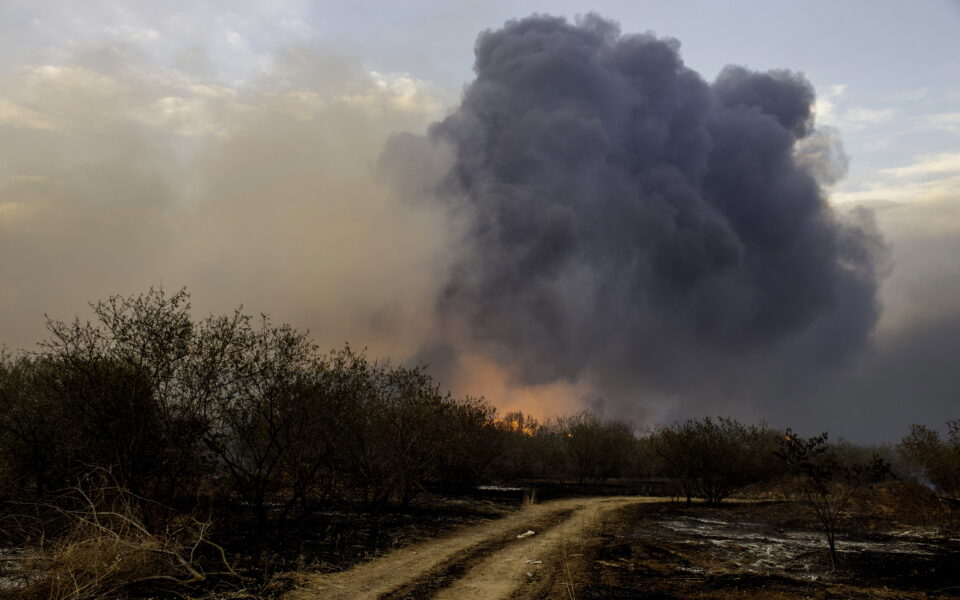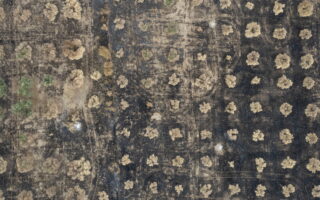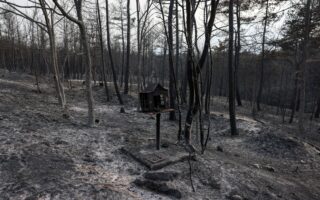Joint program explores measures to reduce wildfire risk, emissions

Greece, France, and Montenegro have joined forces in a scientific program dubbed MediterRE3 that is aimed at adopting management practices to reduce the risk and extent of wildfires, as well as the resulting carbon emissions.
The National Observatory of Athens is one of the key participants in the program, with Dr. Tim van der Schriek, an associate at the NOA Institute for Environment Research and Sustainable Development, telling the Athens-Macedonian News Agency (ANA) that the initiative began two years ago and operates effectively in two directions.
“One aspect focuses on the management of forests and land surfaces, aiming to minimize both the occurrence and the scale of wildfires. The other aspect, handled by the observatory, involves predicting how fires evolve in response to changing climate conditions,” he said.
Utilizing specific models, the NOA’s CLIMADAPT team and the Oikos Institute suggest that implementing fire-smart landscape management practices in just 5% of high-risk areas can result in a 15% reduction in the annual area burned by wildfires. They emphasize that this strategy will aid in reducing carbon dioxide emissions and contribute to achieving the EU’s 2050 climate neutrality objectives.
According to the study’s findings, employing smart fire management solutions effectively curbs the anticipated rise in greenhouse gas emissions attributable to future wildfires by the century’s end. Additionally, the CLIMADAPT team has devised a protocol for evaluating the efficacy of fire-smart landscapes using publicly accessible data.
The MediterRE3 program concentrates on three locations inside natural parks in Greece, Montenegro and France – specifically, Luberon, Prokletije, Komovi and the Samaria Gorge – to explore such fire-risk management practices. The project’s central approach revolves around biomass management, aiming to diminish the spread and intensity of wildfires. As noted by the Oikos Institute, “by studying combustion potential and fire behavior, forests and entire landscapes become more resistant to fire spread and ignition.”
Furthermore, guidelines have been developed on “Building Fire-Smart Landscapes in the Mediterranean Region,” which adapt natural principles of forest landscape restoration. The objective is to enhance the resilience of Mediterranean forest landscapes and mitigate fire risk.
Researchers underscored that inadequate land management, leading to dry biomass accumulation, is a primary driver of wildfires. They remarked, “current fire management policies have predominantly emphasized enhancing firefighting capabilities rather than prioritizing land management practices and preventive measures. These measures would maintain combustible material levels at acceptable thresholds, thereby reducing potential fire sizes and facilitating effective management. In light of projected climate change, there must be a shift in focus from firefighting to substantial landscape planning for prevention.”
The Oikos Institute warned that “wildfires could potentially account for 30% of carbon emissions in the Mediterranean region in the 21st century.
“Inadequate land management, resulting in dry biomass accumulation and landscape simplification, is a key contributor to wildfires,” it said. [AMNA]





